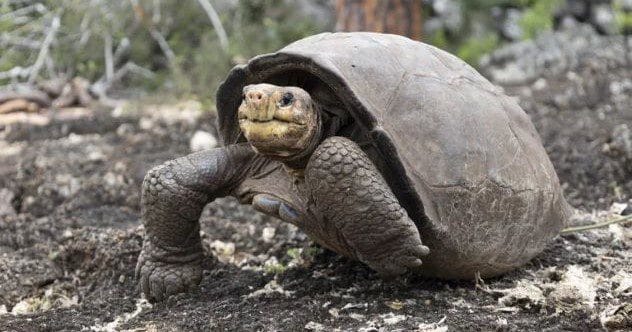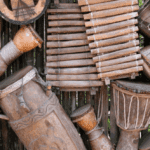The world is home to an estimated 900,000 islands, each with its own unique characteristics. While many islands share similarities, some boast incredibly rare and unusual features. Let’s explore ten exceptionally rare oddities found on islands that will leave you in awe.
10. Luzon: The Island with the Most Unique Mammals
Forget Australia and Madagascar! The Philippine island of Luzon is home to the highest concentration of unique mammal species. A 15-year study concluded in 2016 revealed that Luzon hosts 56 mammal species, with 52 being endemic.
An astounding 93% of these species are found nowhere else on Earth, making Luzon a true biological treasure. Its size, comparable to Iceland or Cuba, combined with diverse habitats, allows for less competition and greater evolutionary divergence. [1]
9. Easter Island’s Submerged Moai
The iconic Moai statues of Easter Island are world-renowned. In 2023, a unique discovery was made: a Moai statue found lying on its side in a dry laguna bed within the Rano Raraku crater.
Measuring 5 feet 3 inches (1.6 meters) tall, this is the first Moai ever found in a laguna in this region. Experts believe it was submerged for 200–300 years before the laguna began drying up in 2018, raising questions about how it ended up at the bottom. [2]
8. Andaman Islands: Home to a Hospital Superbug
In 2009, the deadly, multidrug-resistant fungus Candida auris emerged in hospitals worldwide, alarming health officials. By 2019, the CDC labeled it an “urgent threat.”
Researchers traced its origins to the Andaman Islands, a remote archipelago near India. They discovered the fungus in a marsh and on a beach. The beach variant was more heat-resistant, supporting the unsettling theory that climate change may be evolving harmless organisms into lethal human pathogens. [3]
7. Kangaroo Island’s “Dead” Ant Colonies
After devastating bushfires swept through Australia in 2020, wildlife experts installed breeding boxes on Kangaroo Island to aid animal recovery. Scientists discovered a Polyrhachis femorata ant colony inside one of these boxes, but all the ants appeared dead.
However, this was a clever act of self-defense. The entire colony was feigning death, triggered by the disturbance when the scientists opened the box—a rare behavior for an entire ant nest. [4]
6. Vangunu Island’s Infant-Sized Rat
Locals on Vangunu Island in the Solomon Islands had long spoken of a massive rat called “vika” hiding in the Zaira forest. Despite these claims, scientists hadn’t found any proof until 2017, when loggers discovered a dead vika.
Researchers then set up camera traps, finally capturing photos of the elusive creatures. Roughly the size of a newborn child, the vika is one of the largest and rarest rats in the world. [5]
5. Santa Catalina Island’s Hollywood Bison Herd
American bison on an island off the coast of Los Angeles? That’s exactly what you’ll find on Santa Catalina Island. In 1924, a movie studio brought 14 bison to the island for filming.
After production wrapped, the herd was left behind. They adapted, thrived, and even appeared in the 1971 film Bless the Beasts & Children. Today, around 100 bison roam the island, supporting a thriving tourism industry. [6]
4. Tonga-Hunga Ha’apai Island’s Unknown Life Forms
When volcanic activity created Tonga-Hunga Ha’apai Island in the South Pacific in 2015, scientists had a rare chance to observe the birth of an ecosystem. Surprisingly, the first colonizers weren’t the expected cyanobacteria. Instead, they found unique microbes that consume sulfur and atmospheric gases.
These microbes resembled species from deep-sea hydrothermal vents and hot springs, suggesting they originated deep underground. Unfortunately, another volcanic eruption destroyed the island seven years later. [7]
3. Fernandina Island’s Lost Tortoise
The Fernandina Giant Tortoise, native to Fernandina Island in the Galápagos, was thought to be extinct after the last sighting in 1906. However, in 2019, park rangers discovered a female tortoise.
DNA tests confirmed she was indeed a Fernandina Giant Tortoise. Named Fernanda, she’s now at the Galápagos National Park’s Giant Tortoise Breeding Center. With signs of at least two more tortoises on the island, there’s hope to revive the species. [8]
2. São Tomé Island’s Rebuilding Species
São Tomé Island is home to two unique types of caecilians, amphibians resembling worms or eels. Northern caecilians are bright yellow, while their southern counterparts are yellow with brown markings.
Once considered separate species, a 2014 study revealed they are interbreeding. Volcanic activity around 300,000 years ago split a single species into two, but with the lava flows now eroded, they are merging back into one. [9]
1. Trinidade Island’s Horrifying Hybrid Rocks
On Trinidade Island, off the coast of Brazil, geologist Fernanda Santos discovered strange blue-green rocks. These weren’t just rocks covered in plastic; they were hybrid rocks formed from natural materials and plastic trash.
These “plastiglomerates,” “plastistones,” and “pyroplastics” are a disturbing testament to plastic pollution. Similar formations have been found in Britain, Hawaii, Japan, and Italy. [10]
These islands reveal the incredible diversity and unexpected surprises our planet holds. From unique species to geological anomalies, there’s always something new to discover.
What’s the most surprising thing you learned? Share your thoughts in the comments below!










